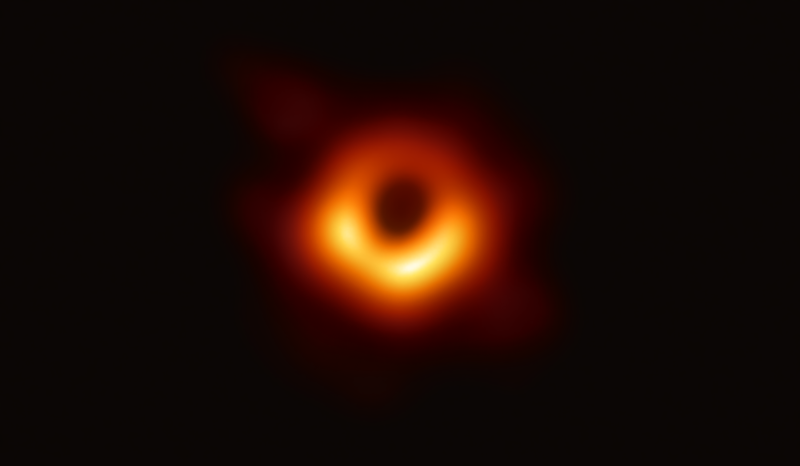
Astrophysics researchers at The University of Alabama contributed to a global effort to give unparalleled insight into a black hole and the system it powers, and to improve tests of Einstein’s General Theory of Relativity.
Dr. Marcos Santander, assistant professor of physics and astronomy, and his graduate student Weidong Jin observed the black hole using the VERITAS gamma-ray observatory in Arizona, leading the VERITAS contribution to this work.
The black hole made headlines two years ago when scientists released the first image of it using the Event Horizon Telescope. However, that remarkable achievement, based on April 2017 observations of the supermassive black hole in the galaxy M87, was just the beginning of the science story to be told.
“We knew that the first direct image of a black hole would be groundbreaking,” said Dr. Kazuhiro Hada of the National Astronomical Observatory of Japan, a co-author of a new study being published in The Astrophysical Journal Letters to describe the large set of data. “But to get the most out of this remarkable image, we need to know everything we can about the black hole’s behavior at that time by observing over the entire electromagnetic spectrum.”
The immense gravitational pull of a supermassive black hole can power jets of particles that travel at almost the speed of light across vast distances. M87’s jets produce light spanning the entire electromagnetic spectrum, from radio waves to visible light to gamma rays. This pattern is different for each black hole. Identifying this pattern gives crucial insight into a black hole’s properties but this is a challenge because the pattern changes with time.
Scientists compensated for this variability by coordinating observations with many of the world’s most powerful telescopes on the ground and in space, collecting light from across the spectrum.

“This incredible set of observations includes many of the world’s best telescopes, with a combined record of 300 years of operation,” said co-author Dr. Juan Carlos Algaba of the University of Malaya in Kuala Lumpur, Malaysia.
This is the largest simultaneous observing campaign ever undertaken on a supermassive black hole with jets.
“The core and jet emit very energetic radiation and monitoring it across the electromagnetic spectrum allows us to understand how the supermassive black holes are able to power this emission and how jets can emerge out of this environment,” Santander said.
Each telescope delivers different information about the behavior and impact of the 6.5-billion-solar-mass black hole at the center of M87, which is located about 55 million light years from Earth. “There are multiple groups revving up to see if their models are a match for these rich observations,” said co-author Daryl Haggard of McGill University.
The data were collected by a team of 760 scientists and engineers, from nearly 200 institutions, and 32 countries or regions, using 19 observatories funded by agencies and institutions around the globe. The observations were concentrated from the end of March to the middle of April 2017.
Along with collecting data with VERITAS, Santander and Jin analyzed the data, scheduled observations of the object with the Fermi gamma-ray space telescope, and combined their results with those from the other groups while contributing to the writing of the paper. Their work was supported by the National Science Foundation.
“Understanding the acceleration of particles in M87 is really central to our understanding of both the EHT image as well as the jets, in all their ‘colors,’” said co-author Dr. Sera Markoff from the University of Amsterdam.
The combination of data from these telescopes, and current and future EHT observations, will allow scientists to conduct important lines of investigation into some of astrophysics’ most significant and challenging fields of study.
Contact
Adam Jones, UA communications, 205-348-4328, adam.jones@ua.edu
